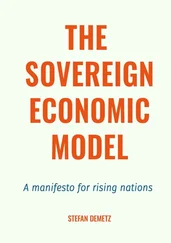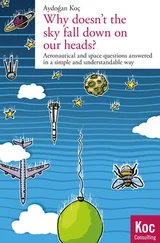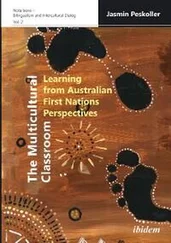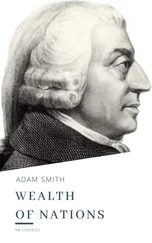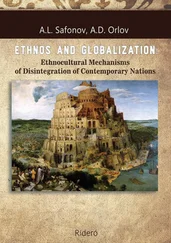Probably the most obvious impact of this massive extraction of human beings was demographic. It is difficult to know with any certitude what the population of Africa was before the modern period, but scholars have made various plausible estimates of the impact of the slave trade on the population. The historian Patrick Manning estimates that the population of those areas of West and West-Central Africa that provided slaves for export was around twenty-two to twenty-five million in the early eighteenth century. On the conservative assumption that during the eighteenth and early nineteenth centuries these areas would have experienced a rate of population growth of about half a percent a year without the slave trade, Manning estimated that the population of this region in 1850 ought to have been at least forty-six to fifty-three million. In fact, it was about one-half of this.
This massive difference was not only due to about eight million people being exported as slaves from this region between 1700 and 1850, but the millions likely killed by continual internal warfare aimed at capturing slaves. Slavery and the slave trade in Africa further disrupted family and marriage structures and may also have reduced fertility.
Beginning in the late eighteenth century, a strong movement to abolish the slave trade began to gain momentum in Britain, led by the charismatic figure of William Wilberforce. After repeated failures, in 1807 the abolitionists persuaded the British Parliament to pass a bill making the slave trade illegal. The United States followed with a similar measure the next year. The British government went further, though: it actively sought to implement this measure by stationing naval squadrons in the Atlantic to try to stamp out the slave trade. Though it took some time for these measures to be truly effective, and it was not until 1834 that slavery itself was abolished in the British Empire, the days of the Atlantic slave trade, by far the largest part of the trade, were numbered.
Though the end of the slave trade after 1807 did reduce the external demand for slaves from Africa, this did not mean that slavery’s impact on African societies and institutions would magically melt away. Many African states had become organized around slaving, and the British putting an end to the trade did not change this reality. Moreover, slavery had become much more prevalent within Africa itself. These factors would ultimately shape the path of development in Africa not only before but also after 1807.
In the place of slavery came “legitimate commerce,” a phrase coined for the export from Africa of new commodities not tied to the slave trade. These goods included palm oil and kernels, peanuts, ivory, rubber, and gum arabic. As European and North American incomes expanded with the spread of the Industrial Revolution, demand for many of these tropical products rose sharply. Just as African societies took aggressive advantage of the economic opportunities presented by the slave trade, they did the same with legitimate commerce. But they did so in a peculiar context, one in which slavery was a way of life but the external demand for slaves had suddenly dried up. What were all these slaves to do now that they could not be sold to Europeans? The answer was simple: they could be profitably put to work, under coercion, in Africa, producing the new items of legitimate commerce.
One of the best documented examples was in Asante, in modern Ghana. Prior to 1807, the Asante Empire had been heavily involved in the capturing and export of slaves, bringing them down to the coast to be sold at the great slaving castles of Cape Coast and Elmina. After 1807, with this option closed off, the Asante political elite reorganized their economy. However, slaving and slavery did not end. Rather, slaves were settled on large plantations, initially around the capital city of Kumase, but later spread throughout the empire (corresponding to most of the interior of Ghana). They were employed in the production of gold and kola nuts for export, but also grew large quantities of food and were intensively used as porters, since Asante did not use wheeled transportation. Farther east, similar adaptations took place. In Dahomey, for example, the king had large palm oil plantations near the coastal ports of Whydah and Porto Novo, all based on slave labor.
So the abolition of the slave trade, rather than making slavery in Africa wither away, simply led to a redeployment of the slaves, who were now used within Africa rather than in the Americas. Moreover, many of the political institutions the slave trade had wrought in the previous two centuries were unaltered and patterns of behavior persisted. For example, in Nigeria in the 1820s and ’30s the once-great Oyo Kingdom collapsed. It was undermined by civil wars and the rise of the Yoruba city-states, such as Illorin and Ibadan, that were directly involved in the slave trade, to its south. In the 1830s, the capital of Oyo was sacked, and after that the Yoruba cities contested power with Dahomey for regional dominance. They fought an almost continuous series of wars in the first half of the century, which generated a massive supply of slaves. Along with this went the normal rounds of kidnapping and condemnation by oracles and smaller-scale raiding. Kidnapping was such a problem in some parts of Nigeria that parents would not let their children play outside for fear they would be taken and sold into slavery.
As a result slavery, rather than contracting, appears to have expanded in Africa throughout the nineteenth century. Though accurate figures are hard to come by, a number of existing accounts written by travelers and merchants during this time suggest that in the West African kingdoms of Asante and Dahomey and in the Yoruba city-states well over half of the population were slaves. More accurate data exist from early French colonial records for the western Sudan, a large swath of western Africa, stretching from Senegal, via Mali and Burkina Faso, to Niger and Chad. In this region 30 percent of the population was enslaved in 1900.
Just as with the emergence of legitimate commerce, the advent of formal colonization after the Scramble for Africa failed to destroy slavery in Africa. Though much of European penetration into Africa was justified on the grounds that slavery had to be combated and abolished, the reality was different. In most parts of colonial Africa, slavery continued well into the twentieth century. In Sierra Leone, for example, it was only in 1928 that slavery was finally abolished, even though the capital city of Freetown was originally established in the late eighteenth century as a haven for slaves repatriated from the Americas. It then became an important base for the British antislavery squadron and a new home for freed slaves rescued from slave ships captured by the British navy. Even with this symbolism slavery lingered in Sierra Leone for 130 years. Liberia, just south of Sierra Leone, was likewise founded for freed American slaves in the 1840s. Yet there, too, slavery lingered into the twentieth century; as late as the 1960s, it was estimated that one-quarter of the labor force were coerced, living and working in conditions close to slavery. Given the extractive economic and political institutions based on the slave trade, industrialization did not spread to sub-Saharan Africa, which stagnated or even experienced economic retardation as other parts of the world were transforming their economies.
MAKING A DUAL ECONOMY
The “dual economy” paradigm, originally proposed in 1955 by Sir Arthur Lewis, still shapes the way that most social scientists think about the economic problems of less-developed countries. According to Lewis, many less-developed or underdeveloped economies have a dual structure and are divided into a modern sector and a traditional sector. The modern sector, which corresponds to the more developed part of the economy, is associated with urban life, modern industry, and the use of advanced technologies. The traditional sector is associated with rural life, agriculture, and “backward” institutions and technologies. Backward agricultural institutions include the communal ownership of land, which implies the absence of private property rights on land. Labor was used so inefficiently in the traditional sector, according to Lewis, that it could be reallocated to the modern sector without reducing the amount the rural sector could produce. For generations of development economists building on Lewis’s insights, the “problem of development” has come to mean moving people and resources out of the traditional sector, agriculture and the countryside, and into the modern sector, industry and cities. In 1979 Lewis received the Nobel Prize for his work on economic development.
Читать дальше




